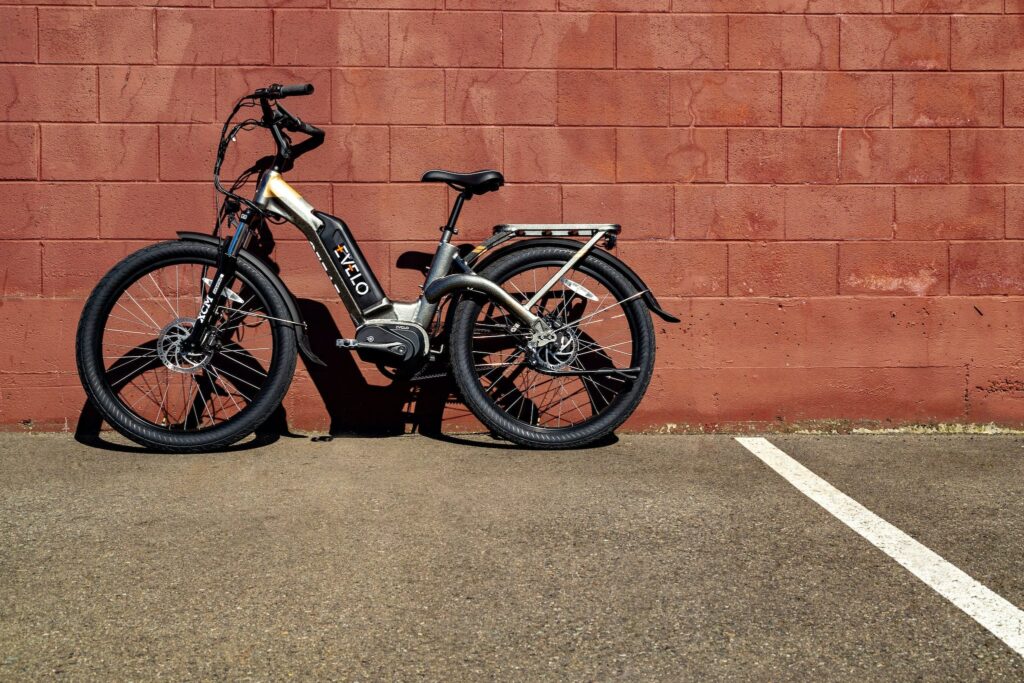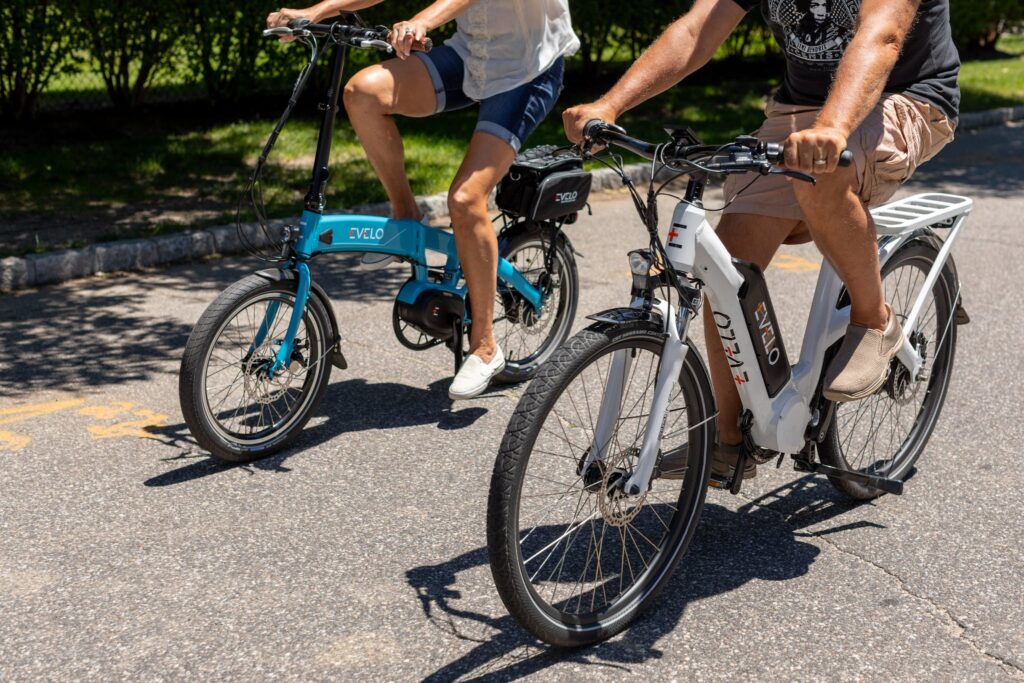Electric bikes are not just a fad; they are revolutionizing the way we think about urban mobility. With their distinct electric bike advantages, e-bikes are seriously shaking up the commute game. With their integrated electric motors, E-Bikes not only stand out as a green and wallet-friendly alternative to traditional means of transportation but are also a beacon of convenience in today’s world.
They’re rapidly gaining traction, especially in bustling towns and cities where the daily battle with traffic is all too real. Moreover, recent trends indicate a surge in the number of E-Bike commuters. This growth is particularly notable among the elderly who find e-bikes easier to manage, and those who face long distances in their daily commutes.
The ease of use, combined with the ability to cover extended distances without exhaustion, makes them an appealing option for many. With these compelling advantages, it’s no wonder that e-bikes are setting a new standard for urban mobility in 2023.
Table of Contents
Summary
One of the most significant advantages of electric bikes is their ability to reduce commute times. E-bikes are faster than traditional bicycles, and they can easily navigate through traffic. Commuters can save time and avoid the hassle of finding a parking spot. Additionally, electric bikes offer a low-cost alternative to cars and public transportation. They are relatively affordable to buy and maintain, making them an attractive option for budget-conscious commuters.
Another advantage of e-bikes is their potential to improve the health and fitness of riders. Despite having an electric motor, e-bikes still require some degree of pedaling, offering an excellent opportunity for physical exercise. This can particularly benefit adults who may not have the time or inclination for regular workouts. With these advantages, it’s no wonder that electric bikes are revolutionizing commutes and changing the way we travel.
The Rise of E-Bikes: How and Why They’ve Gained Popularity

As the world becomes more environmentally conscious, people are looking for alternative modes of transportation that are sustainable, cost-effective, and convenient. Riding an ebike has become increasingly popular in recent years due to their many advantages over traditional bicycles.
One of the primary reasons for the rise in popularity of e-bikes is their ability to assist riders. The battery-powered motor assists the rider’s pedal power, making it easier to climb hills and ride longer distances. This feature makes e-bikes an attractive option for commuters who want to avoid the hassle of traffic and parking, while still getting exercise.
Another reason for the popularity of e-bikes is their environmental friendliness. According to a report by Mintel, e-bike sales accounted for more than 23% of all bicycle sales in the UK in 2020, and this number is expected to grow in the coming years. E-bikes produce fewer emissions than cars and are a more sustainable mode of transportation, making them an excellent choice for eco-conscious individuals.
Additionally, technological advancements have made e-bikes more affordable and accessible to the general public. The cost of batteries has decreased significantly, and e-bikes are now available in a wide range of styles and price points. This makes it easier for people to find an e-bike that fits their budget and needs.
Understanding Electric Bikes
As the name suggests, electric bikes or e-bikes are bicycles that are powered by an electric motor. They are becoming increasingly popular due to their many advantages over traditional bicycles and other modes of transportation. In this section, I will explore the basics of electric bikes, including their electric motor and batteries, manufacturer, and racking.
Electric Motor and Batteries
The electric motor is the heart of an electric bike. It provides power to the bike’s wheels, making it easier to pedal and allowing riders to travel faster and farther. The motor is powered by a rechargeable battery, which is usually mounted on the frame of the bike. The battery provides the energy needed to power the motor, and its capacity determines how far the bike can travel on a single charge.
Different electric bikes come with different types of batteries, including lithium-ion, lead-acid, and nickel-cadmium. Lithium-ion batteries are the most common and are preferred due to their high energy density, low weight, and long lifespan. They are also the most expensive.
Manufacturer and Racking
Electric bikes are manufactured by a variety of companies, ranging from small startups to large corporations. Some of the most well-known electric bike manufacturers include Pedego, Rad Power Bikes, and Trek. When choosing an electric bike, it is important to consider the manufacturer’s reputation, customer service, and warranty.
Racking is an essential component of electric bikes, as it allows riders to carry cargo and other items. Most electric bikes come with a rear rack, which can be used to carry panniers, bags, and other items. Some electric bikes also come with front racks, which can be used to carry additional cargo.
Key Advantages of Electric Bikes Over Traditional Bikes
Having tried e-bikes firsthand, I can attest to the numerous advantages they offer compared to traditional bikes. Here are some of the key benefits of electric bikes:
Power-Assisted Pedaling: Conquering Hills and Long Distances with Ease
One of the biggest advantages of e-bikes is the power-assisted pedaling. With the help of a motor, e-bikes make it easy to conquer hills and long distances, even for those who are not in the best physical shape. The motor provides a boost to your pedaling, making it effortless to ride uphill or cover longer distances. This feature is especially useful for commuting, as it can help you arrive at work or school feeling fresh and energized.
Green and Clean: The Environmental Impact of Zero Emissions
Another advantage of e-bikes is their environmental impact. E-bikes are almost zero-emission vehicles, meaning they don’t produce any harmful pollutants or greenhouse gases directly. However, it’s worth noting that the only emission associated with e-bikes comes from generating the electricity needed to charge them. Even with this consideration, they remain an eco-friendly alternative, especially when compared to traditional bikes, which still produce emissions from the rider’s exertion. Moreover, by choosing an e-bike over your car or motorcycle, you can significantly reduce your carbon footprint and contribute positively to environmental protection.
Wallet-Friendly Rides: Cutting Down on Commute Costs
E-bikes are also a cost-effective alternative to traditional bikes. While they may have a higher upfront cost, e-bikes can save you money in the long run by reducing your commute costs. With an e-bike, you don’t need to pay for gas, parking, or public transportation. This can add up to significant savings over time, making e-bikes a smart investment for those looking to cut down on their commute costs.
Inclusivity in Commuting: E-Bikes for Everyone, Regardless of Fitness Level
E-bikes are also more inclusive than traditional bikes. With power-assisted pedaling, e-bikes can accommodate riders of all fitness levels, making them accessible to everyone. This is especially important for commuters who may have physical limitations or health issues that prevent them from riding a traditional bike. This is a great way to incentivize commuting for inactive overweight people. With an e-bike, everyone can enjoy the benefits of cycling, regardless of their fitness level.
Pack Carrying and E-Cargo Bikes
Finally, e-bikes are also great for carrying packs and other cargo. Many e-bikes come equipped with racks or baskets, making carrying groceries, work supplies, or other items easy. For those who need to carry even more cargo, e-cargo bikes are available. These bikes are designed specifically for carrying heavy loads and can make commuting or running errands a breeze.
Transforming Urban Landscapes and Infrastructure

As more people turn to e-bikes as a sustainable and cost-effective mode of transportation, cities around the world are adapting to the e-bike movement by transforming their urban landscapes and infrastructure. In this section, I will explore how cities are adapting to the rise of e-bikes, the evolution of bike lanes, and how decentralizing commutes is reducing traffic congestion in urban centers.
How Cities are Adapting to the E-Bike Movement
Cities are adapting to the e-bike movement by implementing policies that support using e-bikes. For example, some cities are offering incentives such as tax credits or rebates for individuals who purchase e-bikes. In addition, some cities are creating dedicated e-bike parking areas and installing charging stations to make it easier for e-bike riders to recharge their batteries.
The Evolution of Bike Lanes: Safer Paths for E-Bikers
The evolution of bike lanes is making it safer for e-bikers to navigate busy urban centers. Cities are expanding their bike lane networks to accommodate the growing popularity of e-bikes. While currently, e-bikes share lanes with traditional bicycles, there is a forward-thinking vision that in the future we may witness the introduction of dedicated e-bike lanes, separated from other traffic. In addition to these infrastructural changes, cities are implementing traffic calming measures such as speed humps and roundabouts to slow down traffic, further ensuring safety for e-bikers sharing the road with other vehicles.
Decentralizing Commutes: Reducing Traffic Congestion in Urban Centers
Decentralizing commutes is another way cities are adapting to the e-bike movement. By encouraging people to use e-bikes for short trips, cities can reduce traffic congestion and improve air quality. Cities are also implementing bike-sharing programs that allow people to rent e-bikes for short trips, making it easier for people to get around without relying on cars.
Battery Life and Maintenance
The battery is one of the most important components of any ebike. Without a properly functioning battery, the bike won’t be able to run. That’s why it’s crucial to take good care of the battery and ensure it has a long lifespan.
One of the most important things to remember is to avoid overcharging the battery. Most e-bike batteries have a built-in mechanism that prevents overcharging, but it’s still important to be mindful of this. Overcharging can cause the battery to degrade faster and reduce its overall lifespan.
Another thing to keep in mind is to avoid letting the battery drain completely. It’s best to charge the battery regularly and avoid letting it get too low. This can help extend the lifespan of the battery and ensure that it performs optimally.
It’s also important to keep the battery clean and dry. Moisture can damage the battery and reduce its lifespan. So, it’s best to avoid riding in the rain and to store the bike in a dry place.
Regular maintenance is also important to keep the battery functioning properly. This includes checking the connections and cleaning the battery periodically. It’s also a good idea to have the battery tested by a professional every once in a while to ensure that it’s functioning optimally.
Safety Considerations
Electric bikes can travel at higher speeds than traditional bicycles, which demands an elevated level of caution when commuting. As a trauma surgeon, I witnessed a surge in accidents during the early days of the e-bike “fever”. A few factors contributed to this spike:
Alcohol: With the rise of e-bikes, many individuals opted to ride them after visiting bars or attending festivals, believing it to be a safer alternative to driving cars. However, mixing alcohol with e-bike riding is also hazardous. Alcohol impairs your reaction time and judgment, significantly increasing the chances of accidents. Just like with cars, riding under the influence can have disastrous consequences.
Elderly Riders: It’s heartening to see the elderly community embracing e-bikes, bringing them mobility and freedom. However, caution is advised. As we age, our reaction times tend to slow down. Elderly riders, while enjoying the benefits of e-bikes, should be particularly cautious, ensuring they are in a suitable environment and conditions to ride safely.
For all e-bike riders, it’s imperative to watch for obstacles in your path and be prepared to slow down or stop when needed. Maintaining a safe distance from other vehicles and being acutely aware of your surroundings is crucial to ensure not only your safety but also the safety of others on the road.
FAQ
What are the pros and cons of electric bikes?
Pros: Enhanced speed, reduced physical effort, eco-friendly, and versatile for various terrains. Cons: Heavier, more expensive initially, and requires regular charging.
Is electric bike good for daily use?
Yes, e-bikes are suitable for daily use, offering efficient commuting, less exertion, and cost savings over time.
What are the disadvantages of electric bikes?
E-bikes are heavier, can be costly upfront, require battery charging, and might need more maintenance than traditional bikes.
Why Ebikes are better than normal bikes?
E-bikes provide assisted pedaling, allowing for faster speeds, reduced physical strain, and adaptability to more terrains, making commutes and rides easier.








